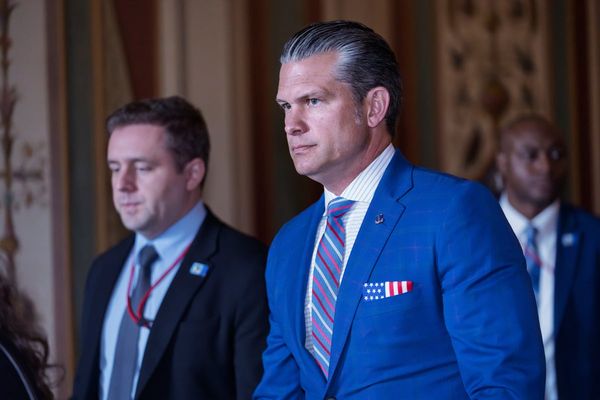
It is one of the most intimate and psychologically charged portraits that the artist Francis Bacon painted of his great love, George Dyer. So special was it to him that he personally selected it to appear at his first major retrospective at Paris’s Grand Palais in 1971.
But what should have been a monumental occasion celebrating Bacon’s stellar career was marred by tragedy when barely 36 hours before the opening, Dyer was found dead from an overdose of sleeping pills, exacerbated by alcohol abuse, in the couple’s shared hotel room.
Now, more than five decades later, Study of George Dyer is being auctioned by Sotheby’s as part of its modern and contemporary arts sale.
The painting, which carries all the hallmarks of Bacon’s best works, is expected to fetch between £5m and £7m when it goes under the hammer next month. It was acquired by the current owner from London’s Marlborough Gallery in 1970, the same year it was painted, and has been publicly seen just twice since then – first at the Grand Palais and later at a show at the Marlborough in 1993.

Dyer was 29 when he met the 54-year-old Bacon in the autumn of 1963. Legend has it that Dyer had broken into the artist’s house (an account perpetuated by the 1998 film Love is the Devil starring Derek Jacobi and Daniel Craig). But according to Bacon himself, they actually met in a Soho drinking den when Dyer introduced himself to Bacon’s party with the gambit: “You all seem to be having a good time. Can I buy you a drink?”
The men quickly became enraptured in each other’s lives, though their relationship would soon be marked by a polarity of extremes: romantic and passionate, tempestuous and violent.
Such congruent of feeling is evident in Study of George Dyer, which is dramatic, intense, and framed within a seductive dark background. The compositional catalyst for the work was a series of photographs of Dyer taken by John Deakin in Soho in about 1964.
The event at Grand Palais was to be the single most important exhibition of Bacon’s life. It marked only the first time after Picasso, Bacon’s hero, that a living artist had been afforded a one-man show at the venue. Bacon continued with the opening, despite suffering from numbing shock over Dyer’s suicide at the Hôtel des Saint-Pères.
“George Dyer was undoubtedly Francis Bacon’s greatest love,” said Tom Eddison, Sotheby’s senior director of contemporary art. “A chance encounter soon evolved into something that could really only be described as a tempestuous and passionate love affair, with Dyer quickly inhabiting a position of paramount importance across the grand theatre of Bacon’s life and work.

“The fact that Dyer appears in over 40 paintings truly shows the emotional force that he had over Bacon, so clearly evident in this intimate, highly charged portrayal. Of all Bacon’s paintings of Dyer, this is the final of just two named portraits he created in this 14in by 12in singular format, which only adds to its emotive power. Its dark, seductive background draws you in, and is perhaps even foretelling of the tragedy that would prevail soon after.”
Dyer hailed from London’s East End and served several short prison terms for theft and petty crime. Study of George Dyer is the last small-scaled portrait Bacon painted of his living muse, making it “extraordinarily rare”, according to Sotheby’s.
The auction house said the painting served as a counterpoint to the “black triptychs” of the early and mid-1970s that commemorate Dyer, which are widely considered to be among Bacon’s greatest artistic triumphs.







